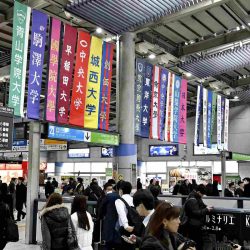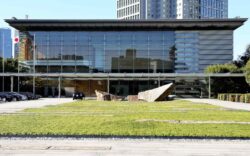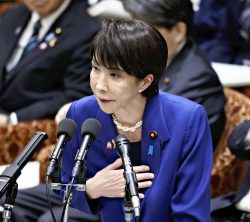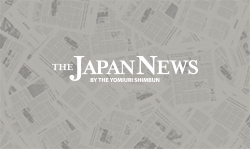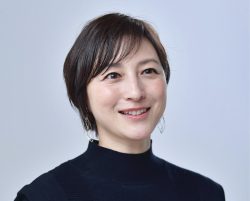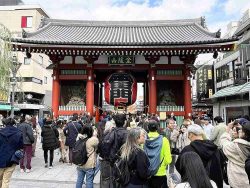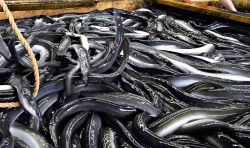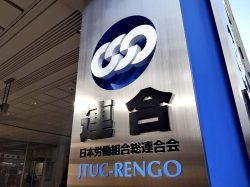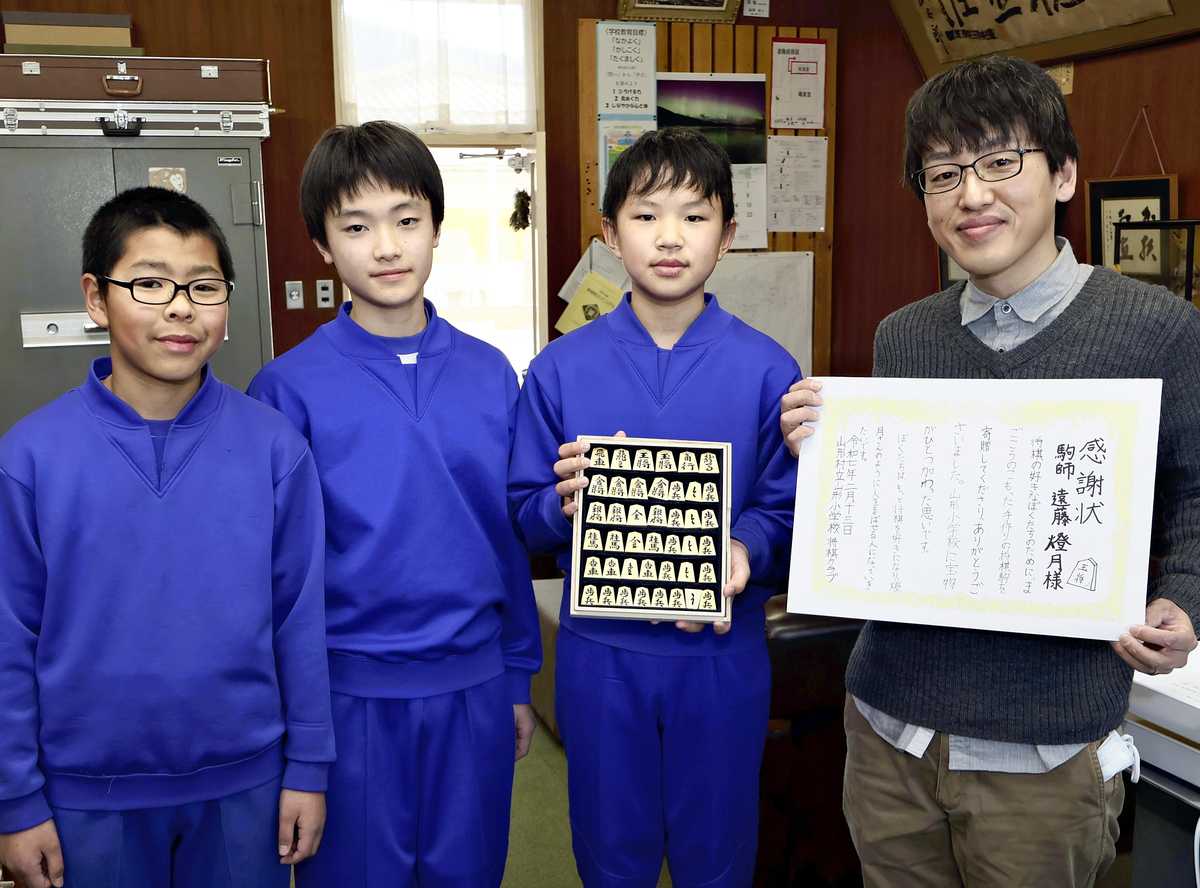
Endo, right, poses for a photo after donating a set of koma shogi pieces he made to an elementary school with members of the school’s shogi club.
11:29 JST, April 3, 2025
MATSUMOTO, Nagano — Not long ago, Tomohiro Endo, 45, a company employee who makes guitars for a living, started crafting pieces for shogi — a Japanese board game similar to chess — as a hobby. And in just 18 months, he has already made a name for himself with his high-quality work.
In Japanese, shogi pieces are called “koma,” or sometimes “goma” when used in compound words.
Endo’s koma will soon be sold on a shogi information website that attracts both professionals and amateurs. His goal is to start making the highest grade of koma, moriage-goma — the type used in professional title matches — within the year.
Endo, a resident of the village of Yamagata, Nagano Prefecture, has been making guitars at a musical instrument manufacturer in the city of Matsumoto for more than 20 years.
Endo has enjoyed watching professional shogi matches for many years. In fact, it was while viewing battles on the shogi board that he became interested in making koma.
The process of making koma is similar to that of guitars: it involves cutting wood to the appropriate size, and then shaping, shaving and polishing it.
Endo thought that he might be able to use the techniques he had honed as a veteran guitar craftsman to make koma.
In August 2023, Endo attended a koma making class for beginners held in Tsuru, Yamanashi Prefecture.
At that time, he was told by Tateo Osawa, 82, the master koma craftsman who organized the class, that he was good at it. This encouraged him to start making koma in earnest.
Osawa heads “Fuji Koma no Kai,” a group of koma makers based in Fujinomiya, Shizuoka Prefecture.
Osawa, whose pieces have been used many times in the top ranking Ryuo and Meijin title matches, has made Fujinomiya a prominent production base for high-grade koma, on the same level as the famous koma-producing city of Tendo, Yamagata Prefecture.
Endo became a student of the master craftsman and trained under him, and so he gradually gained the ability to shape the koma as he liked.
Pentagonal koma are cut from beautifully grained Japanese boxwood. Osawa buys wood which he passes along to Endo.
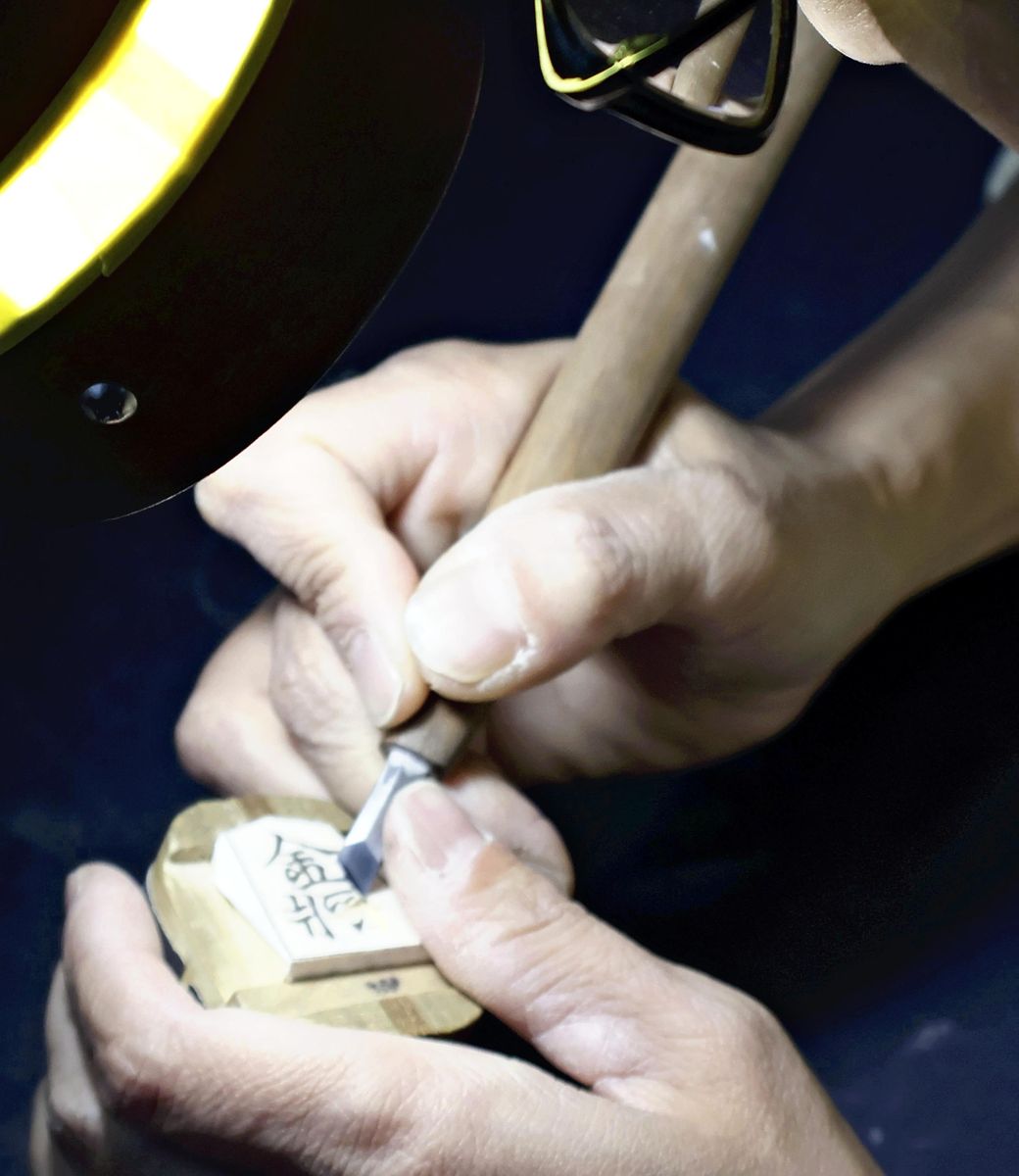
Tomohiro Endo carves a kanji character on a wooden koma shogi piece resting on a rotating carving stand.
High-grade koma come in three types, depending on how they are made.
“Hori-goma,” the kind of koma which Endo currently makes, are made by pasting onto the wood a piece of paper called a “jiboshi,” on which the name of the piece — such as “osho” (king) or “hisha” (rook) — is written, engraving the name into the wood with a carving knife and applying urushi lacquer to the carved parts.
There is also “horiume-goma,” in which the carved and lacquered parts are further lacquered in layers and polished so that the surface of the wood is completely flat,
When lacquer is further applied so that the carved areas become raised from the surface, the koma becomes what is called “moriage-goma.”
Using a carving knife with a blade 6 millimeters wide, Endo meticulously carves wooden koma that are 2 to 3 centimeters tall and 6 to 7 millimeters thick.
Lacquer is also so difficult to handle that it is said, “If you can control the lacquer, you can control the koma.”
As the work requires a lot of concentration, Endo immerses himself in it during quiet time at night after he gets home from work.
It takes him more than an hour to carve both sides of a koma, and it takes about a month to complete a set of 41 to 42 koma, including spares.
So far, Endo has made 11 sets of hori-goma. Two of them were sold for tens of thousands of yen each at an exhibition and sale event held in Tokyo in October. The reputation of Endo’s koma has spread, leading to online sales on a shogi information website.
Endo has adopted the name “Hizuki,” meaning “illuminated moon,” as his koma craftsman name, while his teacher goes by “Fugetsu,” which means “prosperous moon.”
Endo says he wants to get as close as he can to Osawa’s level and “shine a little light on traditional culture.”
Osawa said: “He is a quick learner and has a good sense for the work. He knows the properties of wood very well. His experience and skills as a musical instrument craftsman serve him well as a koma maker. He is a rare talent.”
Donated to elementary school
In February, Endo donated his eighth set of hori-goma to Yamagata Elementary School. The donation followed the more than 10-year-old practice by “Fuji Koma no Kai” of donating koma shogi pieces made by members to local elementary and junior high schools.
“We are grateful that our students can experience authentic koma,” Principal Masahiro Oike said.
"Society" POPULAR ARTICLE
-
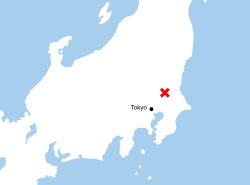
M4.9 Earthquake Hits Tokyo, Neighboring Prefectures
-

Israeli Tourists Refused Accommodation at Hotel in Japan’s Nagano Pref., Prompting Protest by Israeli Embassy and Probe by Prefecture
-

M7.5 Earthquake Hits Northern Japan; Tsunami Waves Observed in Hokkaido, Aomori and Iwate Prefectures
-
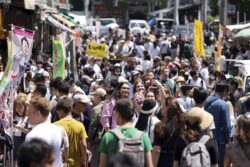
Tsukiji Market Urges Tourists to Avoid Visiting in Year-End
-

High School in Kyoto Says Students Shoplifted during Recent School Trip to Bali, Indonesia
JN ACCESS RANKING
-

Tokyo Economic Security Forum to Hold Inaugural Meeting Amid Tense Global Environment
-

Keidanren Chairman Yoshinobu Tsutsui Visits Kashiwazaki-Kariwa Nuclear Power Plant; Inspects New Emergency Safety System
-
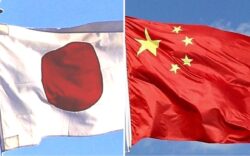
Imports of Rare Earths from China Facing Delays, May Be Caused by Deterioration of Japan-China Relations
-

University of Tokyo Professor Discusses Japanese Economic Security in Interview Ahead of Forum
-
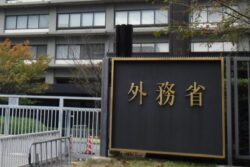
Japan Pulls out of Vietnam Nuclear Project, Complicating Hanoi’s Power Plans


